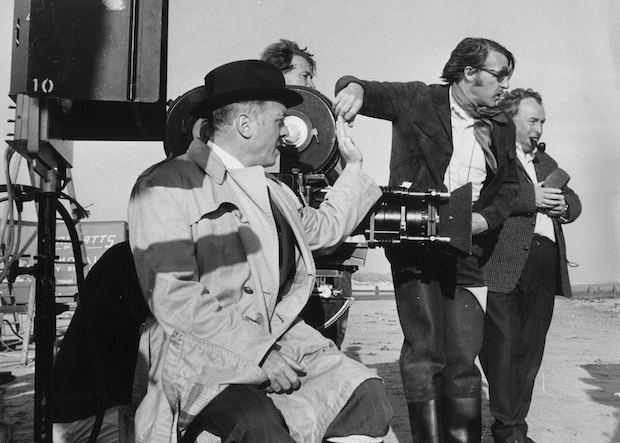During my short and probably best forgotten acting career, I found myself on the pointy end of Dickie Attenborough’s camera on two memorable occasions. The first was a cough and a spit (well, maybe just a cough) as footman to Lady Churchill (Anne Bancroft) in Young Winston where the prospect of welcoming Mrs Robinson home was about as overwhelming as it gets for a fledgling actor with stars in his eyes.
It was a tiny scene, pretty much all in long shot, but the time Attenborough spent ensuring that I and the other household staff knew the full context of it and how that knowledge might colour our unease as characters in the scene was extraordinary. It was gone in the blink of an eye but, during the two days of shooting it, this young actor had the full attention of the director (not the first assistant) and precisely the right motivation for the moment. I doubt anyone remembers seeing me, let alone the motivation, but I was in the moment and that’s what always mattered to Dickie.
Watching him at close quarters for the three months I spent in Holland filming A Bridge Too Far was even more illuminating. Me and two dozen or so other young actors had been hand-picked as the core of the British regiments in the film (many, many more were Dutch extras padding out the ranks of Brits and Germans) and after a full week’s arduous military training (his insistence) individual small parts – such as mine as the padre to Colonel Frost (Anthony Hopkins) – were assigned. We officially became known as the APA (‘Attenborough’s Private Army’). Having us look authentic was crucial to Dickie who encouraged even a willing star like Hopkins out of his caravan to mingle with the boys in his unit.
On Dickie’s instructions we (not wardrobe) looked after our own uniforms back at ‘barracks’ (a converted old people’s home) and in every scene the background action was as important to the texture of that scene as the main players in the foreground. I remember performing the last rites over a dying soldier in one big scene between Hopkins and Christopher Good and again, though I am little more than a blur in the middle-ground, I felt integral and emotionally involved. This attention to detail was catching. Hopkins held up a take on one scene where he simply had to pass me on a flight of stairs in order to check with Attenborough and the military advisor how he would address me in the thick of an operation.
Where possible Dickie would always encourage us to watch key scenes we weren’t involved in. What an education it was observing him with Laurence Olivier or Tony Hopkins, giving them the space and support – and respect – that he himself would expect from a director. And when, at the climax of the film in what became known as the ‘Abide With Me’ sequence I had my one and only close-up, Dickie shot it mute so he could talk me and the other lads through their reactions: ‘Edward, dear, look up and see the Germans closing in…. now.’ I have to say that in the context of that scene this was not exactly conducive to capturing the disquiet of the moment. But I did feel looked after.
Edward Seckerson is a music writer, broadcaster and podcaster






Comments